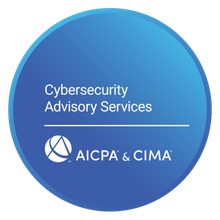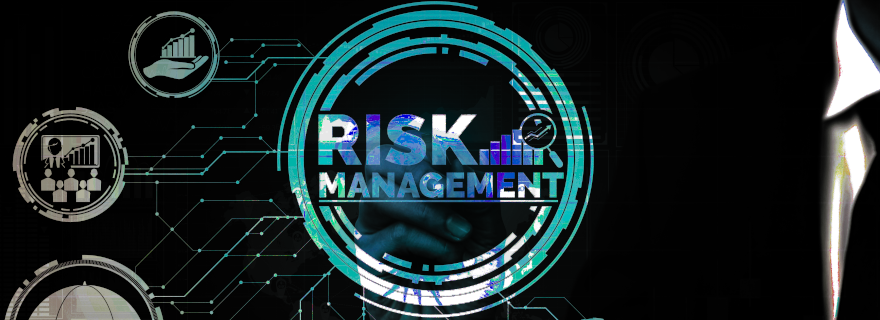Shielding Tax Pros from Advanced Phishing Tactics
In the ever-evolving landscape of cybersecurity, tax professionals face a growing threat from sophisticated phishing schemes. These deceptive tactics, specifically tailored to the tax industry, pose significant risks to sensitive financial data. Understanding the nature of these attacks and implementing effective countermeasures is crucial for safeguarding client information and maintaining trust. This article delves into the latest phishing tactics targeting tax professionals and outlines essential strategies for defense.
Understanding the Landscape of Phishing in the Tax Industry
In the rapidly evolving world of digital finance, tax professionals are increasingly finding themselves in the crosshairs of cybercriminals. Phishing, a form of cyber-attack that involves deceiving individuals into revealing sensitive information, has become alarmingly sophisticated and specifically targeted towards the tax industry. The reason for this targeted approach is clear: tax professionals handle a wealth of personal and financial data, making them prime targets for cybercriminals seeking to exploit this information for financial gain or identity theft.
Recent years have seen a significant uptick in phishing incidents within the tax sector. These attacks range from seemingly innocuous emails requesting information verification to more elaborate schemes impersonating governmental tax authorities or financial institutions. For instance, during the peak of tax season, a common phishing tactic involves sending emails that appear to be from the IRS or a similar agency, urging tax professionals to click on a link or download an attachment under the guise of an urgent update or request for information. Such emails often come with convincing logos, language, and spoofed email addresses, making them particularly deceptive.
The impact of these attacks can be devastating. Not only do they threaten the financial integrity of the professionals and their clients, but they also erode the trust that is foundational to the client-tax professional relationship. Furthermore, a successful phishing attack can lead to legal repercussions and damage to the professional's reputation, which can take years to rebuild.
In this context, understanding the nature of phishing attacks and the ways in which they have evolved to target tax professionals is the first critical step in developing an effective defense strategy. By staying informed about the latest tactics used by cybercriminals, tax professionals can better prepare themselves to identify and thwart these malicious attempts. In the following sections, we will delve deeper into the anatomy of a phishing attack, common tactics to be aware of, and proactive measures to safeguard against these threats.
The Anatomy of a Phishing Attack
Phishing attacks in the tax industry are sophisticated deceptions designed to trick professionals into divulging sensitive information. These attacks often begin with communications that seem legitimate at first glance, typically appearing to originate from trusted sources such as financial institutions, technology services, or government entities like the IRS.
Crafting Phishing Attacks:
-
Spoofing Trusted Entities: Cybercriminals create emails, websites, or caller IDs that mimic legitimate organizations. An example is an email address with minor variations from the official one, like
irs-gov.cominstead ofirs.gov. -
Creating Urgent and Compelling Content: The content of phishing messages is designed to instill urgency or fear. For instance, an email might claim there's an issue with a client's tax filing, urging immediate action.
-
Incorporating Malicious Attachments or Links: These emails often include attachments or links that, when accessed, can install malware on the recipient’s system or lead them to fraudulent websites to capture sensitive data.
Employing Psychological Manipulation:
- Sense of Urgency: Creating a false deadline or emergency to prompt hasty actions.
- Impersonation of Authority: Using the guise of authoritative figures or organizations to gain trust.
- Familiarity and Relevance: Leveraging information that seems relevant to the recipient, like current tax laws or commonly used software.
Case Study: A Real IRS Phishing Incident
In 2019, the IRS reported a sophisticated phishing scheme targeting tax professionals. The emails, falsely from "IRS Online," included an attachment labeled "Tax Account Transcript." The IRS alerted that opening the attachment could deploy malware, particularly Emotet, known for stealing sensitive data. This incident highlights the advanced nature of phishing attacks and their capacity to convincingly imitate credible sources.
(Source: IRS News Release, "IR-2018-226," November 2019)
The example above demonstrates the critical need for tax professionals to stay informed and vigilant against such sophisticated phishing tactics. As we transition to the next section, we will explore various common phishing techniques. This knowledge is essential for tax professionals to recognize and combat these threats effectively.
Common Phishing Tactics to Watch Out For
Tax professionals need to be aware of various phishing techniques that cybercriminals commonly use. By understanding these tactics, you can better identify potential threats and protect sensitive client data. Let's delve into some of the most prevalent phishing methods:
-
Spear-Phishing: Unlike broad phishing attempts, spear-phishing targets specific individuals or organizations. In the tax industry, this might involve emails tailored to look like they're from a known client or a reputable organization, requesting sensitive data or urgent action. The personalization of these emails makes them more convincing and, therefore, more dangerous.
Discussion: Spear-phishing relies heavily on the attacker's ability to appear as a familiar and trusted contact. It often involves detailed research on the target, such as using information from social media or previous correspondence. Tax professionals should be particularly cautious with emails requesting sensitive information, even if they appear to come from known contacts.
-
Whaling: This tactic targets high-level executives, such as senior tax advisors or partners in a firm. The goal is often to steal large sums or sensitive company information. These attacks are highly customized and may involve crafting scenarios that are highly relevant to the executive's role or current business situations.
Discussion: Whaling attacks can have significant repercussions given the level of access and authority that high-level executives possess. Educating top-level staff on these types of attacks and implementing strict verification processes for financial transactions or data requests is crucial.
-
Social Engineering: This broad term covers various tactics that manipulate individuals into divulging confidential information. It can happen via phone calls (vishing), text messages (smishing), or emails. Attackers might pose as IT support, tax authorities, or clients to extract information or gain unauthorized access.
Discussion: Social engineering exploits human psychology rather than technical vulnerabilities. Building a culture of security awareness within your firm, where staff members are trained to question and verify the authenticity of requests, is a key defense strategy against these tactics.
Awareness of these phishing methods is just the first step. In the following sections, we will explore proactive measures that tax professionals can take to protect themselves and their clients from these cyber threats.
Proactive Measures Against Phishing Attacks
To effectively combat phishing, tax professionals must adopt a multi-layered approach that includes both technical solutions and human vigilance. Here are key strategies to enhance your defenses against phishing attacks:
-
Strengthen Email Security: Implement robust email security protocols to filter out potential phishing emails. This can include spam filters, anti-malware software, and email authentication methods like DMARC (Domain-based Message Authentication, Reporting, and Conformance).
Discussion: These technical measures can significantly reduce the volume of phishing emails that reach your inbox. However, it's crucial to keep in mind that no system is foolproof. Continuous updating and monitoring of these systems are necessary to adapt to evolving phishing tactics.
-
Regular Training and Awareness Programs: Conduct ongoing cybersecurity training for all staff members. This training should cover how to recognize phishing emails, the importance of not clicking on suspicious links or attachments, and the protocol for reporting potential phishing attempts.
Discussion: Human error often plays a significant role in successful phishing attacks. Regular training ensures that your team remains vigilant and informed about the latest phishing techniques and prevention strategies.
-
Implement Two-Factor Authentication (2FA): Enforce 2FA for accessing sensitive data and systems. This adds an additional layer of security, making it harder for attackers to gain access even if they manage to obtain a user's credentials.
Discussion: 2FA can be a game-changer in preventing unauthorized access. Even if a phishing attempt is successful, 2FA can stop attackers from accessing critical systems or data.
-
Verify Suspicious Requests: Always verify the authenticity of requests for sensitive information, especially if they come unexpectedly. This can involve calling the requester using a known phone number or using an alternative communication method to confirm the request.
Discussion: Verification is particularly important when dealing with requests that seem out of the ordinary or urgent. Creating a standard procedure for verifying such requests can significantly reduce the risk of falling for a phishing scam.
-
Regularly Update and Patch Systems: Ensure that all your systems, including antivirus software, are regularly updated and patched. Cybercriminals often exploit vulnerabilities in outdated software to carry out their attacks.
Discussion: Keeping software up-to-date is a basic yet crucial aspect of cybersecurity hygiene. It closes known vulnerabilities, making it more challenging for attackers to exploit your systems.
By incorporating these proactive measures, tax professionals can significantly bolster their defenses against phishing attacks. However, it's important to recognize that the landscape of cyber threats is constantly changing, and staying informed and adaptable is key to maintaining effective security.
Responding to a Phishing Incident
In the event of a suspected or confirmed phishing attack, it's crucial to have a clear and immediate response plan. This plan should aim to minimize damage, assess the scope of the breach, and prevent further unauthorized access. Here are the steps tax professionals should take:
-
Immediate Isolation of Affected Systems: If you suspect that your system has been compromised, immediately disconnect the affected devices from the network. This helps prevent the spread of potential malware and isolates the incident.
-
Change Credentials: Promptly change passwords and access credentials, especially if you suspect they have been compromised. It's advisable to change passwords for all related systems as a precaution.
-
Notify IT and Security Teams: Quickly involve your IT and cybersecurity team. If you don't have an in-house team, consider having a cybersecurity response firm on standby. They can assist in analyzing the incident and initiating appropriate countermeasures.
-
Assess the Impact: Determine the extent of the data breach and identify what information has been accessed or stolen. This assessment will inform the subsequent steps and is crucial for legal and compliance purposes.
-
Inform Affected Parties: Depending on the nature and extent of the breach, you may need to inform your clients, stakeholders, and possibly regulatory bodies. Transparency is key, and timely notification can help mitigate the damage.
-
Review and Learn: After addressing the immediate concerns, review the incident to understand how the breach occurred. Use this information to strengthen your defenses and prevent future incidents.
-
Legal and Regulatory Compliance: Consult with legal experts to understand your obligations under relevant laws and regulations. This may include reporting the breach to regulatory bodies and complying with data breach notification laws.
-
Public Communication: If the breach is significant, prepare a public statement outlining what happened, the potential impact, and the steps you're taking in response. This helps manage the narrative and maintain trust.
Future Trends and Preparedness in Phishing Defense
As cyber threats continue to evolve, staying ahead of future trends in phishing is crucial for tax professionals. This section explores potential future trends in phishing and offers guidance on maintaining readiness against these evolving threats.
-
AI and Machine Learning in Phishing: Expect phishing attacks to become more sophisticated with the integration of AI and machine learning. These technologies could enable cybercriminals to automate attacks and personalize them at scale.
Discussion: To counteract this, tax professionals should invest in advanced cybersecurity solutions that also use AI and machine learning to detect and prevent sophisticated attacks. Keeping abreast of technological advancements in cybersecurity can provide a crucial edge.
-
Rise of Mobile Phishing Attacks: With the increasing use of smartphones and tablets in the professional world, mobile phishing attacks are likely to rise. These attacks may come through SMS (smishing), social media apps, or even through mobile-specific phishing websites.
Discussion: Encourage staff to apply the same level of caution with mobile devices as they would with computers. Regular training sessions on mobile security best practices can be instrumental in preventing such attacks.
-
Targeting Through Social Media: Social media platforms may become more common avenues for phishing attempts, exploiting the informal nature of these channels.
Discussion: Implement policies governing the use of social media for professional purposes and educate your team on the risks associated with social media interactions.
-
Continuous Education and Training: The best defense against phishing is a well-informed team. Continuous education and regular training sessions on the latest phishing trends and defense strategies are essential.
Discussion: Consider regular cybersecurity workshops and updates as part of your firm’s ongoing professional development program. This keeps cybersecurity at the forefront of everyone's mind.
-
Collaboration and Information Sharing: Collaborating with other tax professionals, cybersecurity experts, and industry groups can provide valuable insights into emerging threats and best practices.
Discussion: Participation in forums, webinars, and industry conferences can facilitate the exchange of ideas and strategies, helping your firm stay one step ahead of cybercriminals.
Staying informed and adaptable is key to combating future phishing threats. By being proactive and embracing continuous learning and collaboration, tax professionals can significantly enhance their resilience against these evolving cyber challenges.
Staying Vigilant in an Ever-Changing Cyber Landscape
The fight against phishing in the tax industry is ongoing and ever-evolving. As we have explored, understanding the nature of phishing attacks, recognizing common tactics, implementing proactive defensive measures, and preparing for future trends are all critical components of a robust cybersecurity strategy. The key to success lies in staying informed, vigilant, and adaptable.
For tax professionals, the stakes are incredibly high. Not only does the security of sensitive client data rest in their hands, but also the trust and integrity of their professional practice. It is a responsibility that demands continuous attention and a proactive approach to cybersecurity.
As part of your commitment to safeguarding your firm and clients against phishing and other cyber threats, we strongly encourage you to take advantage of our comprehensive Employee Training Guide. This guide is designed to empower your team with the knowledge and tools they need to identify and respond to cybersecurity threats effectively. Download it today and take a significant step towards enhancing your firm's cyber resilience.
In conclusion, the battle against phishing is one that requires constant vigilance and a commitment to ongoing education and improvement. By staying abreast of the latest threats and fortifying your defenses, you can protect not only your clients’ data but also the reputation and future of your practice.






